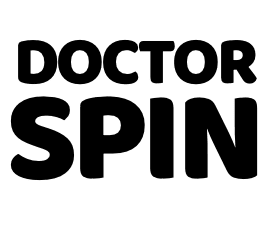Inbound marketing and B2B content publishing is giving brands lots of control. But the drawback is that it takes more work than most would realise.
It’s common dismiss blogging as a bygone phenomenon. And in terms of how everyone used to have a blog, they’re not wrong. Most forms of blogging have slowed down and almost disappeared from the media landscape. Some blogs were so successful that they today are considered media companies in their own right. However, in business-to-business, blogs are still one of the most efficient ways to showcase competence and thought leadership. But such efforts are instead labeled “inbound marketing” and “content marketing”.
The whole rebranding of corporate blogging made sense (and today, I refer to my own blog as an online basecamp). Inbound marketing encapsulates everything from content marketing and email marketing to on-site SEO and conversion optimisation. These are, at least to some extent, buzzwords, but they do allow us to better understand what we must do to get the sort of business results we need.
In any inbound marketing strategy, the actual content is at the heart of it all. While there are so many other things to consider, the content must be at least good enough to do its job. And this is were surprisingly many digital strategies for B2B brands breaks down. Why is it still to this day — or should I say now more than ever? — so hard to write a blog article that will get the job done in your inbound marketing strategy?
To give you an idea, I will guide you through my personal process of creating a normal blog article and for each step, I will explain why that step is necessary to take. The purpose of this exercise is to demonstrate that there are more to a normal blog post than meets the eye.
Step 1: Keyword research and audience questionnaires
I cover topics that I’m personally passionate about, for sure. But I do make sure to inform my decisions by doing keyword research and ask my subscribers what they’re struggling with. I want to stay true to myself and what’s of interest to me, but I do also want to provide as much value as I can.
Therefore, I’ve made a habit of collecting useful keywords (selected phrases used by people in search engines that relates to my expertise and that are reasonably low-ranked in terms of competitiveness). I also collect suggestions from readers. My choice of topics to cover are mostly based on what i want to write about, but these decisions are informed by actual data.
Example: For this article, the SEO keyword is “optimise B2B content”.
Step 2: Write a first (and very rough) draft
No mysteries here, I just bang out a draft, often as quickly as I can.
“Don’t get discouraged because there’s a lot of mechanical work to writing. There is, and you can’t get out of it. I rewrote the first part of A Farewell to Arms at least fifty times. You’ve got to work it over. The first draft of anything is shit. When you first start to write you get all the kick and the reader gets none, but after you learn to work it’s your object to convey everything to the reader so that he remembers it not as a story he had read but something that happened to himself.”
— Ernest Hemingway
Step 3: Adjusting for the guiding article template
There’s a simple but yet important basic structure for me to adhere to. In the beginning, it’s important to have the reader invested in the article. If I’m addressing a problem, I must take my time to describe the problem in a way that is relatable (if you go straight to the solution, people tend to lose interest quickly). Connecting emotionally, even.
In the middle part of the article, I must offer context and analysis that aren’t just the same-old business jargon that is so common everywhere. It’s crucial that I demonstrate that I’ve actually put some serious thought into the topic and that i can offer a perspective in a manner that demonstrates my thought process. If nothing else, to earn the blog article the respect it deserves.
In the end, I must deliver actionable advice or useful models for how to think about the topic for anyone who wants to be successful. And to top it off — a relevant and valuable call-to-action (CTA).
Even though I’ve been blogging for a while, it still takes me some time to adjust my first draft to fit this basic structure. Each article is different, so there’s no easy formula to apply here. And the type of basic structure that would work best for you depend not only on what you’re sharing, but it must also be in harmony with you typography, your visual components, and your overall blog design.

Step 4: Writing headlines and subheads for scanning
When the basic structure is in place, it’s important to make good use of headlines and subheads. People like to scan articles and headlines helps people get a better idea of your content before they’ll commit to actually reading it. Writing headlines is a skill where perfection is impossible and good-enough is often ghoulishly alluring. I do my best to a certain degree, but I try not to think about just how important they are; If I did, I would never be able to publish anything.
My main keyword does help me, though. The rule-of-thumb is that the main keyword should be crucial part of the url, the main headline, and at least one subhead. It makes it easier to settle for a headline and move on, but this optimisation is simultaneously responsible for some painfully bad headlines that you might find here on my blog.
Step 5: Finding and adding images and illustrations
I don’t use enough images — and that’s a shame. Visual components do so much for the end result of getting attention! I’m trying to get better at this (or rather: I try to find solutions for how to quickly create engaging visuals without having each and every blog article becoming this unsurpassable amount of work and resources for a one-man-business).

Step 6: Optimising the blog article for search engines
This is just a one-man-blog for a one-man-business. Still, I do run through RankMath’s 10-15 steps for improving the article’s SEO based on my initial keyword research. Fortunately for me, I find this to be rather meditative. And that’s good, because this activity isn’t exactly “creatively rewarding” by any measure. But it has to be done, so I do it.

Step 7: Time to write various meta descriptions
I write a specific summary for the beginning of the article (these are harder to write than most people might think). Then I write another summary (different length, different purpose) to function as an excerpt on my blog feed. Then I write another summary to be visible for search engines (again, different length, different purpose). I also write a separate summary also for Open Graph (the link text you see when someone shares my articles in social media). This is super fun! Oh wait, that was me being ironic.
If I’m on a roll and the writing process is running smoothly, I’ll also write descriptive texts for all visual elements to aid those who are visually impaired.
Step 8: Selecting tags and doing internal/external linking
Most people just add tags to their posts and move on. Some disregard them altogether. But these tags help search engines understand your body of work contextually. To leverage the power of tags, I strive for having concept-relevant tags. For a tag to do its magic you need to have enough posts connected to each every tag which should allow you to use a moderate number of tags in use. So, I go through my list of approximately 200 tags (too many for my blog, but I’m working on it).
For the same reason, I make sure to link internally to relevant articles providing readers with more context, more knowledge, and more analysis. And my ethos is that you should always link your traffic away from your site whenever there’s better and more relevant information elsewhere.
Step 9: Copy-editing and proofreading
Okay, so I personally often skip this step even though I know that I shouldn’t. If I ever double the amount of traffic that i normally have, then I’ll do this every time, okay?
Step 10: Customise an image for the Open Graph
This is a recent addition to the process: To get people to take an interest in a shared link in social media, I’ve found that just adding the article’s main photo to your Open Graph card doesn’t do the trick anymore. So, I’ve begun to customise the image being shared on social media to make the article’s contents or value proposition even clearer for fast-scrolling users.

And then there’s content promotion…
Phew! All done, now all that remains is to hit publish. (No, even though I wish this were true, there’s still that question of content promotion. Crafting and scheduling social media updates, adding lead magnet landing pages and content upgrades, optimising programmatic ad boosts, sending the article to relevant prospects, niche influencers, and thought leaders, fire up the email list, adding deep content such as lead magnets, content upgrades, landing pages etc.).
In the end, my first point is that it’s quite devastating to skip any of the above steps. I often skip step 5 and 9, but I probably won’t be able to do so for much longer. The competition is simply to tough. And my second point is that few brands are taking this process as seriously as it must be taken today. Even if it does require an effort, the time spent on content creation will pale compared to what sloppy craftsmanship and mediocrity will do to your whole inbound strategy — however finely tuned it is.
Photo by boostinjay on Unsplash.





























